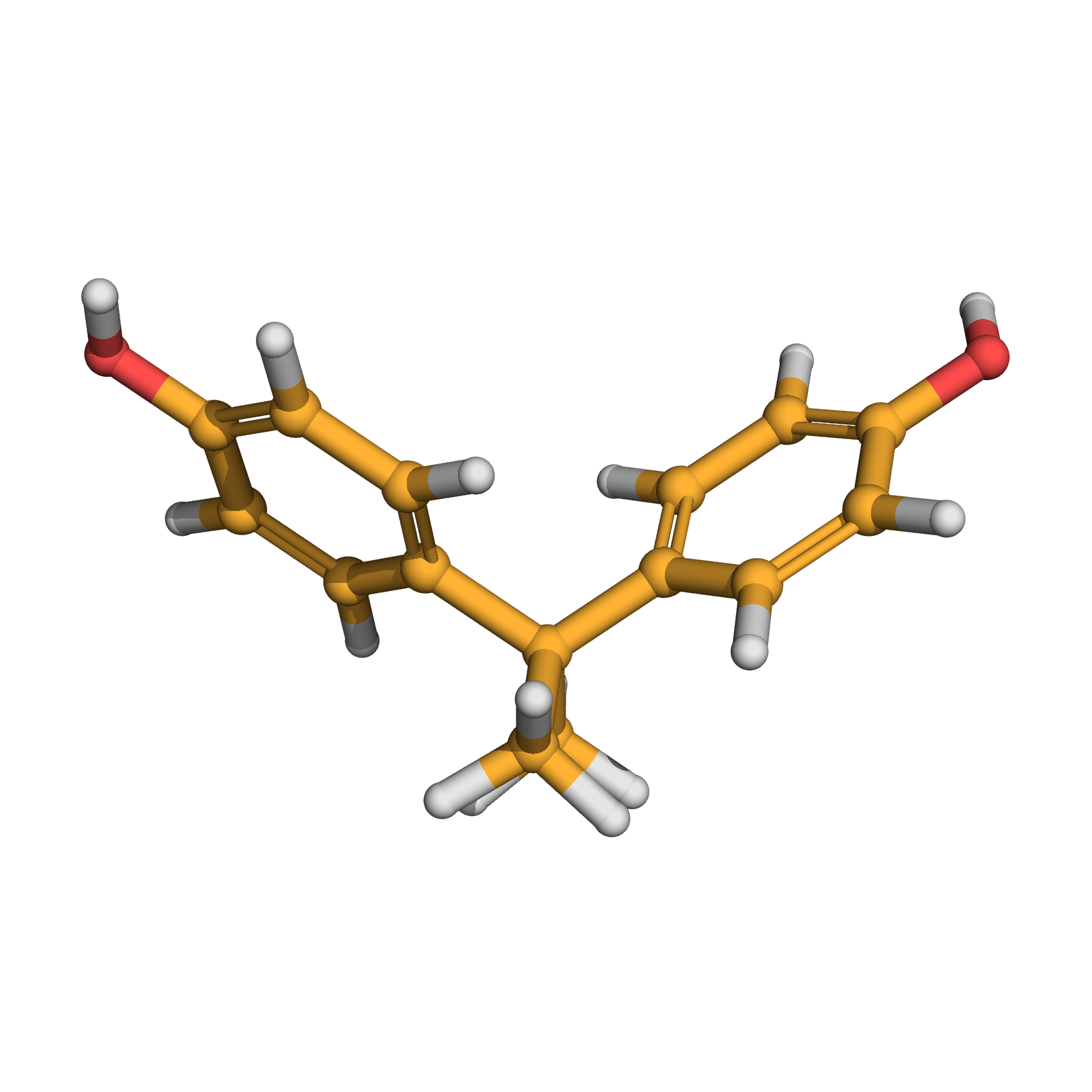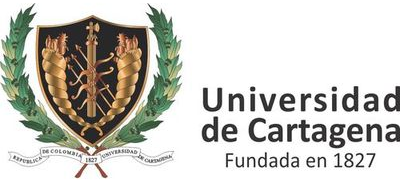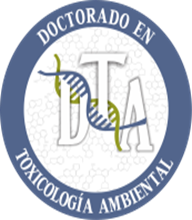bisphenol A
Synonyms: "2,2-bis(4-hydroxyphenyl)propane", "4,4'-isopropylidenediphenol", "diano", "diphenylolpropane", "4,4'-bisphenol A", "bisphenol", "DIAN", "p,p'-isopropylidenebisphenol","bpa"
Source: bisphenol A is a building-block chemical used to make polycarbonate plastic as well as epoxy resins used as can linings.It is used in so many common products that we use every day such as baby bottles, reusable water bottles, microwaveable containers, and the protective coating inside most food and beverage cans.
Identifiers:
IUPAC Name: 4-[2-(4-hydroxyphenyl)propan-2-yl]phenol
CAS Number: 80-05-7
PubChem ID: 6623
InChiKey: IISBACLAFKSPIT-UHFFFAOYSA-N
Canonical SMILES: CC(C)(C1=CC=C(C=C1)O)C2=CC=C(C=C2)O
Structural Properties:
Molecular Formula: C15H16O2
Molecular Weight: 228.286
Pharmacophore Features:
Number of bond donors: 2
Number of bond acceptors: 2
Number of atoms different from hydrogen: 17
Downloads
2D structure (.sdf)
3D structure (.sdf)
3D structure (.mol2)
3D structure (.pdb)
3D structure (.pdbqt)
Search Similar molecules
Evidence Supporting This Chemical as an Endocrine Disruptor
TEDX List of Potential Endocrine Disruptors

Ho SM, Tang WY, De Frausto JB, Prins GS. 2006. Developmental exposure to estradiol and bisphenol A increases susceptibility to prostate carcinogenesis and epigenetically regulates phosphodiesterase type 4 variant 4. Cancer Res 66(11):5624-5632.
Kubo K, Arai O, Omura M, Watanabe R, Ogata R, Aou S. 2003. Low dose effects of bisphenol A on sexual differentiation of the brain and behavior in rats. Neurosci Res 45(3):345-356.
Murray TJ, Maffini MV, Ucci AA, Sonnenschein C, Soto AM. 2007. Induction of mammary gland ductal hyperplasias and carcinoma in situ following fetal bisphenol A exposure. Reprod Toxicol 23(3):383-390.
Timms BG, Howdeshell KL, Barton L, Bradley S, Richter CA, vom Saal FS. 2005. Estrogenic chemicals in plastic and oral contraceptives disrupt development of the fetal mouse prostate and urethra. Proceedings of the National Academy of Sciences USA 102(19):7014-7019
Wadia PR, Vandenberg LN, Schaeberle CM, Rubin BS, Sonnenschein C, Soto AM. 2007. Perinatal bisphenol A exposure increases estrogen sensitivity of the mammary gland in diverse mouse strains. Environ Health Perspect 115(4):592-598.
External Links


2D-structure
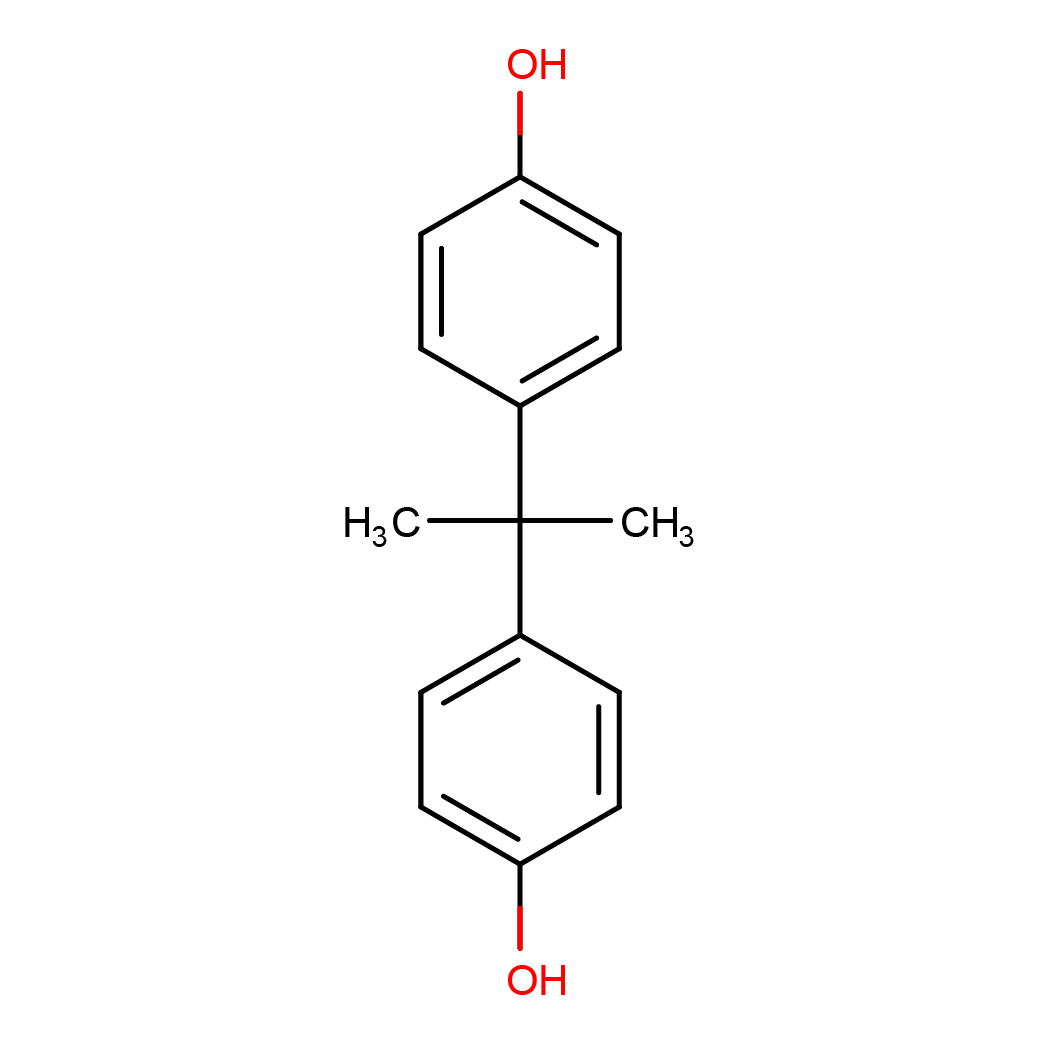
3D-structure
